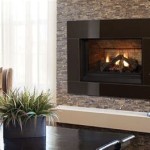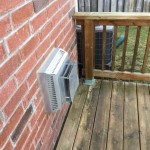Wood Fireplace Blower Fan: Enhancing Efficiency and Comfort
A wood fireplace serves as a focal point in many homes, providing warmth and ambiance during colder months. However, traditional fireplaces can be inefficient, with a significant portion of the generated heat escaping up the chimney. Optimizing the heat output and distribution of a wood fireplace often involves incorporating a wood fireplace blower fan. These devices are designed to circulate the warm air produced by the fire, pushing it out into the room rather than allowing it to dissipate unused. This article explores the function, benefits, selection criteria, and maintenance of wood fireplace blower fans, providing a comprehensive understanding of their role in enhancing fireplace efficiency and overall comfort.
Understanding the Functionality of Wood Fireplace Blower Fans
A wood fireplace blower fan, also referred to as a fireplace insert blower or a fireplace fan, is a mechanical device typically installed either within or below the firebox of a wood-burning fireplace. Its primary function is to augment the natural convection process that occurs when a fire is burning. Without a blower, warm air naturally rises, drawing cooler air from the room to replace it. This process, while functional, is often inefficient, leading to uneven heating and a significant loss of heat up the chimney.
Blower fans address this inefficiency by actively drawing cooler air from the room, passing it over the heated surfaces of the firebox, and then forcing the warmed air back into the room. This forced-air circulation results in a more uniform distribution of heat throughout the space. The fan helps to overcome the stratification effect, where warmer air accumulates near the ceiling while the floor level remains cooler. By constantly circulating the air, the blower fan helps to maintain a more consistent and comfortable temperature throughout the room.
The design of a wood fireplace blower fan typically incorporates a fan unit, a motor, and a housing. The fan unit itself may be a squirrel cage fan or an axial fan, each designed to move air efficiently. The motor powers the fan, and the housing is designed to protect the fan and motor assembly while directing the airflow in the desired direction. Some models also include a thermostat or speed control, enabling users to adjust the fan's operation based on the fire's intensity and the desired level of warmth in the room.
Benefits of Using a Wood Fireplace Blower Fan
Integrating a wood fireplace blower fan into a fireplace system offers several distinct advantages, primarily related to improved heating efficiency and enhanced comfort. These benefits extend beyond simply making the fireplace function more effectively; they can also impact energy consumption and overall heating costs.
One of the most significant benefits is increased heating efficiency. By actively circulating warm air, the blower fan helps to extract more heat from the fireplace and transfer it into the room. This reduces the amount of heat lost up the chimney, allowing the fireplace to heat the space more effectively. Studies have shown that using a blower fan can increase the heating efficiency of a wood fireplace by a substantial margin, potentially reducing the need to supplement the fireplace with other heating sources.
Improved air circulation is another key benefit. Without a blower, warm air tends to stay near the fireplace, creating a localized area of warmth. This can lead to uneven heating, where some parts of the room are too warm while others remain cool. A blower fan helps to overcome this issue by circulating the warm air more effectively, distributing it throughout the room and creating a more uniform temperature. This is particularly beneficial in larger rooms or open-concept spaces where heat distribution can be challenging.
Enhanced comfort is a direct result of the improved heating efficiency and air circulation. A blower fan helps to maintain a consistent and comfortable temperature throughout the room, eliminating cold spots and reducing the temperature variations that can make a space feel uncomfortable. This can create a more inviting and enjoyable environment, particularly during colder months.
Furthermore, the use of a blower fan can potentially reduce the reliance on other heating systems, such as furnaces or electric heaters. By making the fireplace a more efficient heating source, the blower fan can help to lower energy consumption and reduce heating costs. This can be particularly beneficial for homeowners who rely on wood-burning fireplaces as a primary or supplemental heating source.
Selecting the Right Wood Fireplace Blower Fan
Choosing an appropriate wood fireplace blower fan requires careful consideration of several factors, including the fireplace's design, dimensions, and heating requirements. Selecting the wrong blower can lead to inadequate performance, excessive noise, or even damage to the fireplace or blower itself. Therefore, it is essential to evaluate the options and select a blower that is compatible with the specific fireplace and heating needs.
The first consideration is the size and type of the fireplace. Fireplaces come in various sizes and configurations, and the blower fan must be appropriately sized to fit within the available space. Measure the dimensions of the firebox or the area below the fireplace where the blower will be installed. Ensure that the blower fan's dimensions are compatible with the available space, allowing for proper air circulation and clearance.
The airflow capacity of the blower fan, measured in cubic feet per minute (CFM), is another crucial factor. The CFM rating indicates the volume of air that the blower can move in a given time. A higher CFM rating generally translates to more effective heat circulation, but it is essential to select a blower with a CFM rating that is appropriate for the size of the room and the fireplace's heating capacity. A blower with too low of a CFM rating may not effectively circulate the warm air, while a blower with an excessively high CFM rating may create drafts or excessive noise.
The noise level of the blower fan is also an important consideration, particularly for those who value a quiet and peaceful environment. Blower fans can generate noise due to the fan's rotation and the motor's operation. Look for models with noise reduction features, such as rubber grommets or insulated housings, to minimize the noise level. Consider reading reviews or listening to demonstrations of different models to assess their noise levels before making a purchase.
Energy efficiency is another factor to consider. Look for blower fans with energy-efficient motors and features such as variable speed control or thermostat operation. Variable speed control allows users to adjust the fan's speed based on the fire's intensity and the desired level of warmth in the room, while thermostat operation automatically turns the fan on and off based on the firebox temperature. These features can help to reduce energy consumption and noise levels while optimizing the blower's performance.
Finally, consider the quality and durability of the blower fan. Look for models made from high-quality materials and with robust construction. Check for features such as sealed bearings and thermal protection to ensure the blower's longevity and reliability. Reading reviews and researching different brands can provide valuable insights into the blower's quality and performance.
Maintaining a Wood Fireplace Blower Fan
Proper maintenance is crucial for ensuring the longevity and optimal performance of a wood fireplace blower fan. Regular cleaning and inspection can prevent issues such as dust buildup, motor overheating, and decreased airflow. Neglecting maintenance can lead to premature failure of the blower or reduced heating efficiency. Therefore, it is essential to establish a routine maintenance schedule to keep the blower functioning properly.
One of the most important maintenance tasks is regular cleaning. Dust and debris can accumulate on the fan blades, motor, and housing, reducing the blower's airflow and potentially causing the motor to overheat. Use a vacuum cleaner with a brush attachment to remove dust and debris from the blower's components. Pay particular attention to the fan blades, motor vents, and any air intake openings. Disconnecting the blower from the power source before cleaning is essential to prevent accidental electrical shock.
Inspect the blower fan periodically for any signs of damage or wear. Check the fan blades for cracks or bends, and ensure that the motor is running smoothly and quietly. If you notice any unusual noises or vibrations, it may indicate a problem with the motor or fan. In such cases, it is advisable to consult a qualified technician for repair or replacement.
Lubricating the blower fan's motor can also help to extend its lifespan. Some blower fans have sealed bearings that do not require lubrication, while others may require occasional lubrication. Check the manufacturer's instructions for specific lubrication recommendations. If lubrication is required, use a high-quality lubricant designed for electric motors.
If the blower fan is equipped with a filter, clean or replace the filter regularly. A clogged filter can restrict airflow and reduce the blower's efficiency. The frequency of filter replacement depends on the filter type and the amount of dust in the environment. Check the filter regularly and replace it as needed.
During periods of infrequent use, such as during the summer months, it is advisable to disconnect the blower fan from the power source. This can help to prevent electrical surges and prolong the blower's lifespan. Store the blower in a dry and clean environment to protect it from dust and moisture.

Fireplace Efficiency Blowers And Why You Should Have One

Why Should I Get A Fireplace Blower For My Masonry

Fireplace Blower Fans What You Need For Heat Full Service Chimney

Englander Small Room Air Blower For Wood Stoves Ac 16 The Home Depot

Regency Blower Kit Most Wood Stoves 846 515 Woodchimney Com

Appalachian Wood Stove Convection Fan Blower Motor 1c180

Ep 62 Napoleon Wood Stove Replacement Fireplace Blower Fan Kit Hearth Trends

Fireplace Blowers Explained How Fans Work Regency

Fireplace Fan Blower S Com

Pleasant Hearth Wood Stove Blower Pbar 2427 The Home Depot
Related Posts








